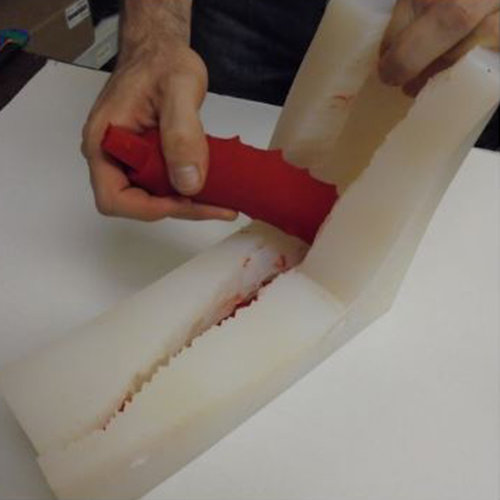RapidMade Accelerates Pace and Elevates Quality of Product Launch
Injection Molding Case Study
3D Printing, or Rapid Prototyping as it is also known, is a much faster and cost effective solution for testing and perfecting digital designs. Its ability to fabricate parts overnight without any direct labor, programming or tooling means 3D printing technologies carry many advantages over traditional technologies like injection molding for short turns and small-batch production.
Sometimes 3D printing only goes so far when developing and manufacturing products in their early stages. In those instances, Rapid Injection Molding can take products to the finish line.
An American-made LED light bulb manufacturer engineered a version that was bigger and brighter than its competition. The company quickly learned that RapidMade's injection molding expertise could test, validate and even manufacture its light bulbs in ways that 3D Printing simply could not match.
RapidMade accelerates the typical injection molding process by providing a short cut between prototyping and production tooling. After the rapid prototyping client finalizes its product for injection molding, RapidMade creates a cheaper and better solution by making pre-final tooling out of aluminum. This option allows customers get to market sooner than other injection mold processes and helps gain customer feedback to improve products. Getting a product to market sooner generates more revenue to invest in further product development and long-term tooling.
Material
Since the customer didn't know what the final material of the bulb should be, cutting the mold and testing multiple materials, including different grades of ABS and Polycarbonate, helped pinpoint the final material and even helped estimate eventual mass manufacturing costs. Additionally, electronics products must go through rigorous UL testing to ensure consumer safety before the product can be sold in stores.
Color and clarity are other traits vital to the lighting industry. Because 3D printers must run manufacturing-grade material that is unadulterated, optimizing these characteristics can be difficult. With injection molding, however, one can custom blend different clear and opaque pigments with clear plastic to prototype different levels of clarity and color. So the company could test very specific color profiles to perfect its formula in the final product.
Finish
Finish is extremely important when working with lighting, as well as other consumer products. A matte finish diffuses light at a very different rate than a polished one. Due to the layered nature, inherent in the 3D printing process, even the highest detail machines will have some level of surface striation. Additionally, most filament or powder technologies will have a very rough finish beyond the layer lines. Achieving custom finishes requires polishing, sanding, and painting of each individual unit, making it is extremely labor intensive and expensive.
Alternatively, injection molding shoots molten plastic into a cavity which picks up the texture of that cavity. That means one only needs to finish a mold once to get repetitive shots of that finish. And molds can be polished and textured to prototype a variety of finishes before settling on the desired one.
Volume
A light bulb is a relatively low-cost consumer good. These goods are meant to be sold in large volume at low cost. Tooling to produce those volumes inexpensively enough can take months to make and require high upfront investment. Many businesses are interested in small and medium-batch options that are more cost effective and higher quality than 3D printing to excite investors, test markets and stoke demand.
The company secured a prototyping option with relatively little upfront investment that served as a bridge tool to get actual product out into the marketplace. Aside from the aforementioned quality concerns, this could not have been cost effectively achieved with 3D printing; one cannot sell a light bulb where the housings cost $38 to the manufacturer. Creating large volumes of parts on a 3D Printer can also take much longer than injection molding, making it harder to fill orders. Injection Molding can really provide exceptional value to early-stage manufacturers when producing runs of hundreds or thousands of parts for low cost very quickly.




